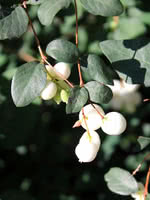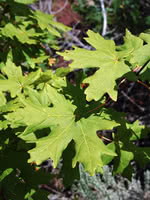Mon-Fri 9am - 5pm Mountain time
Western Snowberry vs Big Tooth Maple
Symphoricarpos occidentalis
Acer grandidentatum
NOT AVAILABLE THIS SEASON - MIGHT RETURN
NOT AVAILABLE THIS SEASON - MIGHT RETURN
Like the Common Snowberry, the Western Snowberry is a small shrub with pink flowers useful for feeding livestock and preventing erosion. Unlike the common species, however, the Western Snowberry is much more suited to wet conditions, capable of persevering through poor soil drainage and occasional flooding.
After the Snowberry's flowers have bloomed, it produces berries which often last on the plant through winter. These berries are toxic to humans, but livestock and local wildlife love them! Those hoping to attract wildlife to their property can plant Snowberry and expect to see animals foraging on it much later in the year than other plants.
Big Tooth Maple is a versatile, cold hardy maple variety that is ideal for small landscapes. It has high ornamental appeal due to its striking red-gold autumn foliage and multi-stemmed form.
Big Tooth Maple is highly deer resistant and drought tolerant as well. Keep in mind the size and form of this tree can vary due to climate, moisture, and growing conditions. In drier spots, you'll notice Big Tooth Maple is more shrub like. In moist, full sun conditions, this tree can grow to be up to 50 ft tall. Plan your site accordingly.
Western Snowberry Quick Facts
Big Tooth Maple Quick Facts
Toxicity: berries are toxic to humans

